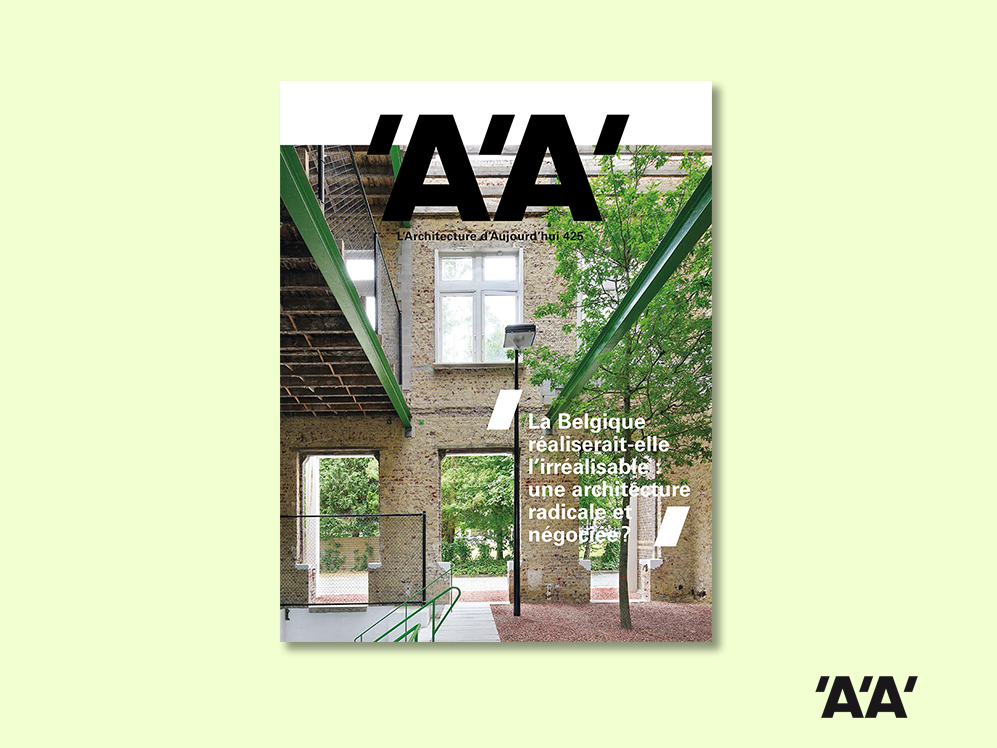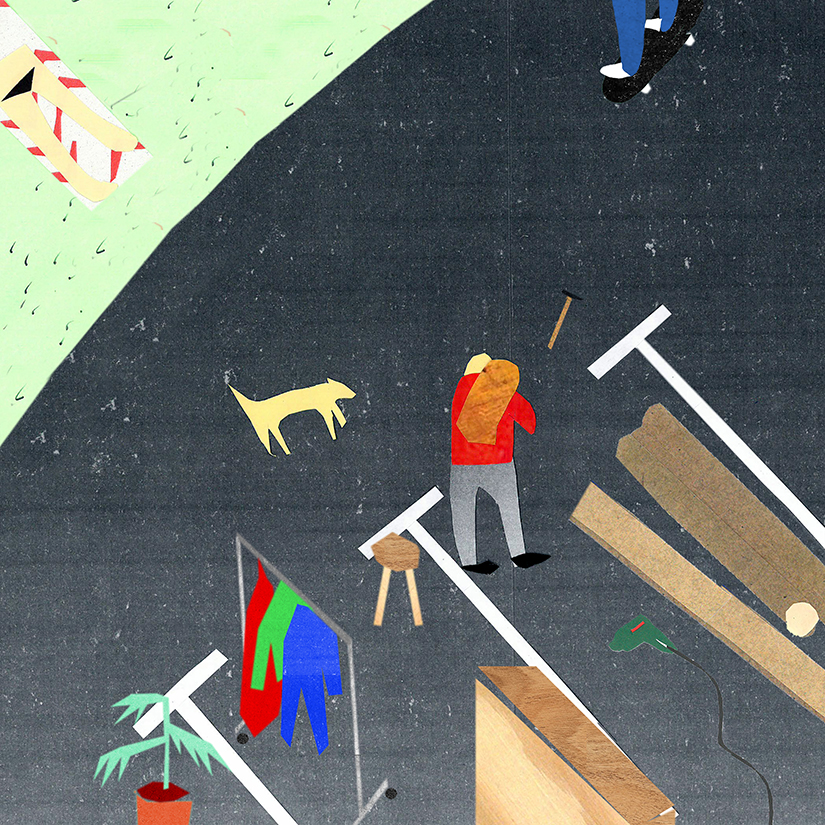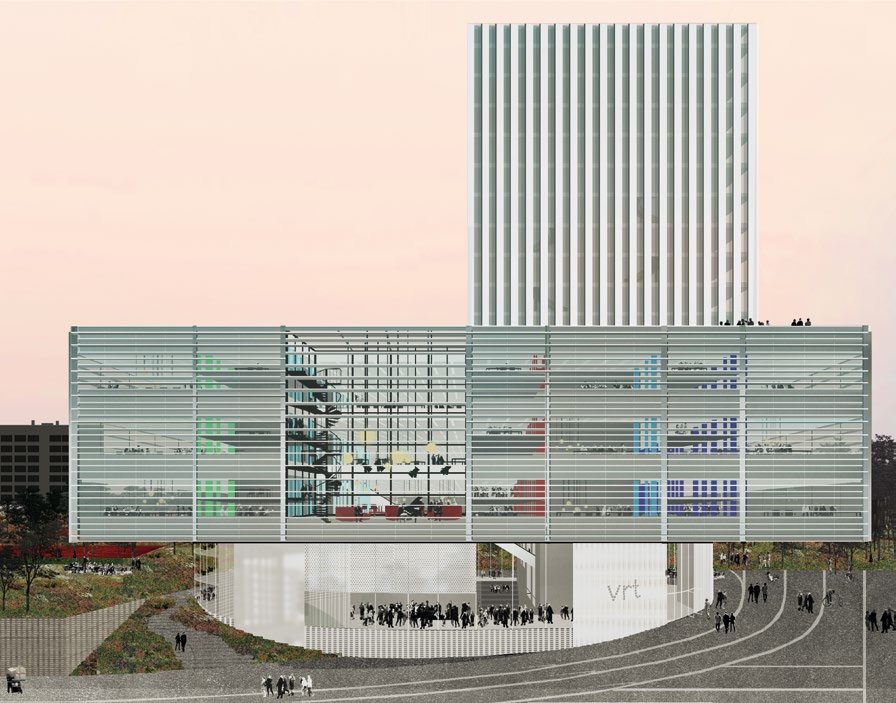
de Willebroeck. Bruxelles, 2017- en cours | © Secchi Smith
The promises of Brussels, the pretty ugly one.
« Generally speaking, Brussels is the laboratory for the European city of the future. Its ugliness, or let’s say its disharmony, can yield surprising opportunities » underlines Kristiaan Borret, Bouwmeester Maître Architecte of Brussels-Capital, in the first pages of the AA special issue dedicated to the missions and projects of the BMA in its territory.
On the occasion of the publication of its special issue, AA publishes here Maurice Culot’s text about the history of Brussels architecture, postface of the special issue Capital Brussels
 Brussels is generally popular among Europeans, and French people in particular, who enjoy its affordable rents, friendly exoticism, wickedly infinite supply of beers, chocolate and speculoos and intense cultural scene, all within a one hour and fifteen-minute Thalys ride from Paris. More concerned with daily life, the citizens of Brussels are more critical regarding traffic congestion, constant road and building works, property speculation, the rise in communitarianism and the
Brussels is generally popular among Europeans, and French people in particular, who enjoy its affordable rents, friendly exoticism, wickedly infinite supply of beers, chocolate and speculoos and intense cultural scene, all within a one hour and fifteen-minute Thalys ride from Paris. More concerned with daily life, the citizens of Brussels are more critical regarding traffic congestion, constant road and building works, property speculation, the rise in communitarianism and the
Belgium is a complicated country which has long since preserved its unity through a king and in compromises between the various political and linguistic leanings. Today the gap between the seven million Flemish speakers, the four million French speakers and the hundred thousand German-speaking inhabitants has been constantly growing since the country’s regionalisation.
At the centre, Brussels, with its one million and two hundred thousand inhabitants, surrounded by Flanders, enjoys a fragile status of city-region made up of 19 bilingual municipalities. A considerable share of its population is foreign: those working for Europe with high living standards, tax expats living in Ixelles and Uccle, and an immigrant population which is not immune to withdrawals into one’s own community, as was tragically the case recently in Molenbeek. Taking the underground in Brussels is an invigorating journey through the dialects of the world. Compared to other European capitals, the city centre and its outskirts have lost their value and are home to a growing immigrant population. This exogenous feature can be explained by a lifestyle broadly based on individual houses with gardens and family use of the car.
The country did not have a feudal system; rather the burghers provided financial assistance to princes in exchange for privileges placed in clock towers visible from afar. This state of affairs has developed into a fanatical individualism. Here, each person wants to live in an original house that is different to their neighbours’ and the great Victor Horta was quick to file proceedings against any peers who had the audacity to copy or imitate him. Some streets in Brussels are genuine museums of architecture and tributes to invention and variety.
In short, after the Second World War, despite the rail link – via a viaduct and a trench – between the Gare du Nord in Paris and the Gare du Midi in Brussels, which cut through the entire length of the old quarter, Brussels is still a pretty provincial city with a collection of quaint streets. The pentagon-shaped old centre is surrounded by tree-lined boulevards. These avenues and the monumental fountains which adorn them were developed on the site of fortifications upon Napoleon’s initiative. To stop Brussels from overshadowing Paris, the emperor divided the then unified city into independent municipalities, each jealously guarding their independence. It was not until the reign of Leopold II that the city developed infrastructure worthy of the name and a remarkable system of parks and gardens. As time went by, the country stopped making money out of coal, glass and steel, but reconstruction gave rise to an economic boom that was boosted by the Marshall Plan. It is true that the Americans decided to overrun Europe with their products from the port of Antwerp, a choice based on the Belgian lifestyle more closely resembling their own, as was rather well put in Boris Vian’s song La Complainte du Progrès.
In 1950, Brussels enjoyed a peaceful existence and licked its lips at the idea of the next World Fair to be held there in 1958, in addition to the establishment of the NATO headquarters and soon the European Community. Unemployment and unrest in deprived districts were still far on the horizon. The Belgian capital was made up of municipalities administered by debonair little kings, each one dreaming of having his own high-rise building, a modern phallus in a shameful parody of the old clock tower. While the World Fair caused national euphoria, the end was nigh. Engineers got caught up in urban highways, turning the boulevards into racetracks, the old centre, neglected by the bourgeoisie who moved to the suburbs, was crumbling and the European institutions which, while unquestionably invigorating the economy and cultural life, had an insatiable appetite for office space, unhesitatingly driving out residents to expand their floor space.
A provincial city, Brussels was not prepared for such a disruption of its habits. The easy money quickly corrupted society. Elected representatives, civil servants, engineers, property developers and architects, supported by the media outlets, seized the city. The era of “Brusselisation”, or in other words the destruction of a city in peace time, began in the 1960s. Demolitions occurred on an unprecedented scale, levelling an entire deprived district of several hectares to build high-rise buildings for a project pompously named “Manhattan”, a reflection of the American influence on people’s minds. The city increasingly appeared to be made up of inhabited islands separated by areas of no-man’s land.
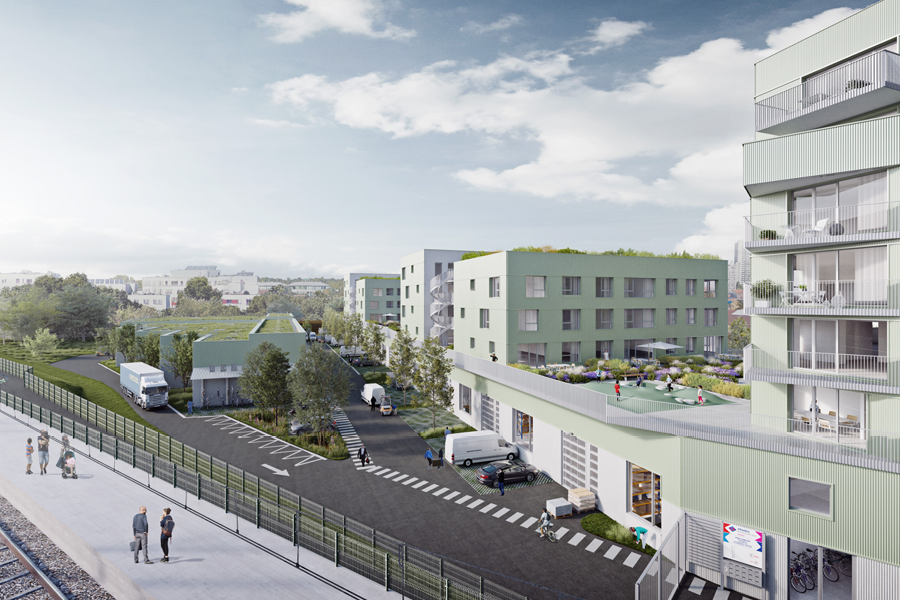
de Mons, Anderlecht, 2020 – en cours | © BOGDAN & VAN BROECK, DDS+, Atelier Eole
During this speculative frenzy, two decisions triggered a revolt that was as spontaneous as it was momentous. The first decision, in 1969, concerned the destruction of the workingclass Marolle district to extend the offices of the Ministry of Justice and, surprise surprise, David slew Goliath. The second targeted the construction of the ITT tower, in 1968, in the wealthy districts of the Avenue Louise. These struggles, both working-class and middle-class, made headlines and elected representatives began to worry, particularly as environmental concerns were starting to emerge. The Atelier de Recherche et d’Action Urbaines (ARAU), led in particular by sociologist René Schoonbrodt, lawyer Philippe De Keyzer and Jacques Van der Biest, a charismatic figure of the Marolle district, was founded in 1969. ARAU contested projects which rejected urban diversity and continuity through counter-projects published in the press and provided technical and strategic assistance to the growing number of resident associations – up to more than one hundred were active. To increase their representativeness, all local associations came together in the Inter Environnement platform created by Michel Didisheim, a senior official distraught by the capital’s destruction. This was a time when, with the approval of socialist leaders and the Historical Monuments Commission, a global masterpiece, Victor Horta’s Maison du Peuple, was soon to be replaced by the most mediocre high-rise building in Brussels.
This outcry, which was both unexpected and widespread, had a radical effect and terminated mafia-type relations. The urban planning of the fait accompli gave way to democratic procedures of systematic consultations with residents who could now voice their complaints and exert an influence over decisions. The world of architecture, which was severely undermined in public opinion, emerged terribly scarred by this period in which architectural products were presented, discussed and criticised publicly. Today, while still necessary, the role of associations has waned. Firstly, because heritage is taken into greater consideration, urban diversity and continuity have become commonplace and also due to the procedures which circumvent them, such as the frequent use of architecture competitions (with the winner becoming unassailable) and the appointment by elected representatives of expert architects (Chief architect or bouwmeester). It is not so much the role of the expert that is challenged here, but rather the way in which it is supposed to act as a barrier between elected representatives and associations, without which there would be no real democratic urban development.
Associations, which often know the city more than elected representatives and the architects, are ultimately an important yardstick of quality, of architectural responses and of the efficacy of the built environment. Their opinions contribute to the definition of a common contextual framework in which architecture plays its part. Ex nihilo creation (not to mention abstract concepts which are flourishing) rarely generate a city, even though it can produce beautiful buildings. In addition, there is nothing stopping elected representatives from ignoring the opinions of associations, but in this case they must be aware of the political risk they take.
That’s what democracy is, after all.
Maurice Culot
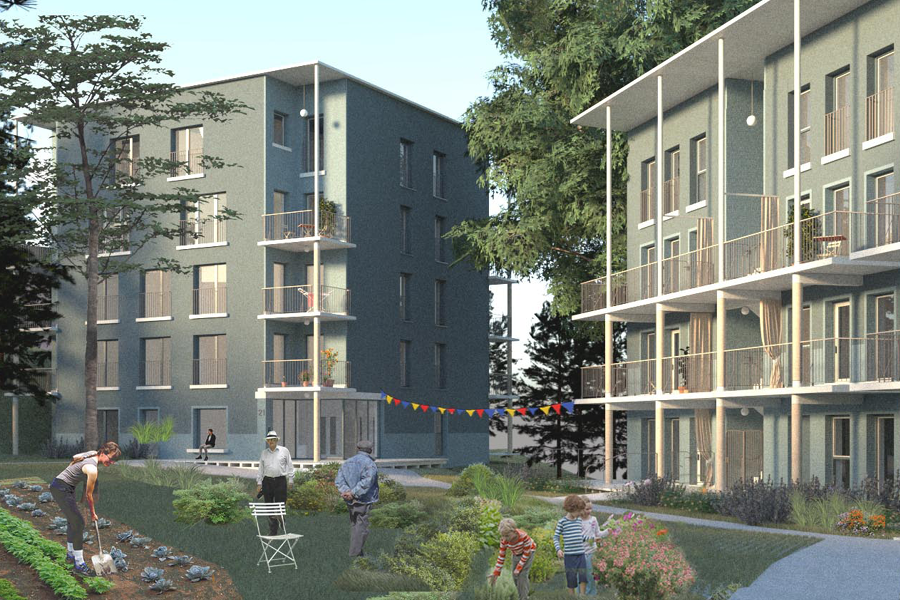
To discover the entire special edition of Brussels, in capitals, visit our online shop

